by GaryG
“I have no secrets as past watchmakers had. There are graveyards full of secrets and that’s enough.” –Philippe Dufour, 2014
Have you heard of Philippe Dufour?
Chances are, if you have been collecting watches for any significant period of time, his name is well known to you. But I’m not assuming that everyone reading these words is a collector, or even a dyed-in-the-wool watch enthusiast. I meet many people in my watch-related comings and goings who aren’t either aware, or fully aware, of Dufour and his work.
That said, a great deal has already been said, written, and recorded about Philippe Dufour. My Quill & Pad colleagues Elizabeth and Ian have both written at length on the man, he has appeared in videos and movies, and there is even a Japanese comic book about him!
Nonetheless, I have such deep respect for Philippe that I’d like to set out my personal views: first on why I believe that he is important to the world of horology, and second on why he is important to me as a person.
Let’s get going. The five key descriptors I feel are critical to understanding Dufour’s significance to the watch world are: foundation, tradition, innovation, perfection, and perpetuation.
Foundation
When I was a young instrumentalist, any trip to the music store or request for an audition inevitably began with the query, “Who’s your teacher?” Whether in playing or composing, apprenticeship has long been a critical element of musical mastery, and the same is true of top-level watchmaking.
Haydn, in addition to influencing Mozart, taught Beethoven, who taught Czerny, who taught Lizst.
In the horological world, Charles Meylan schooled Kari Voutilainen; George Daniels influenced and inspired François-Paul Journe and worked closely with Roger Smith; and it was Gabriel Locatelli who passed along many of the critical “secrets” to Philippe Dufour.
Locatelli was prolific in his influence: over a period of years, he passed his knowledge along to many others, including Eric Coudray of Jaeger-LeCoultre Gyrotourbillon and Reverso Repetition Minutes fame and young horological superstar David Candaux.
Dufour and Locatelli had a close relationship that survived well beyond their times at Jaeger-LeCoultre. Prior to his untimely death in a motoring accident, Gabriel worked together with Philippe, and even built the Simplicity prototype that is Philippe’s daily wearer.
Here’s that watch, seen on my wrist (what you can’t see are the chills that were running down my spine).
Tradition
Another thing that Dufour has in common with many other great watchmakers is the time that he spent as a restorer of fine vintage timepieces. In doing so, he was able to learn the patterns distinguishing watchmaking traditions and even individual watchmakers from each other.
He also learned to identify a variety of ways of solving given problems, and, ultimately, to find his own desired form of expression based on the traditional movement architectures and artistic expressions of the Vallée de Joux from the period between 1850 and 1920.
Dufour ‘s work perpetuates, and extends, that great tradition.
Innovation
Dufour does not consider himself a great innovator; in fact, he often claims that there is “nothing new” in horology. Certainly, he has drawn inspiration from prior inventions. For instance, here’s a photo of a student watch from 1933 that gives us a sense of the inspiration for Dufour’s twin-escapement Duality.
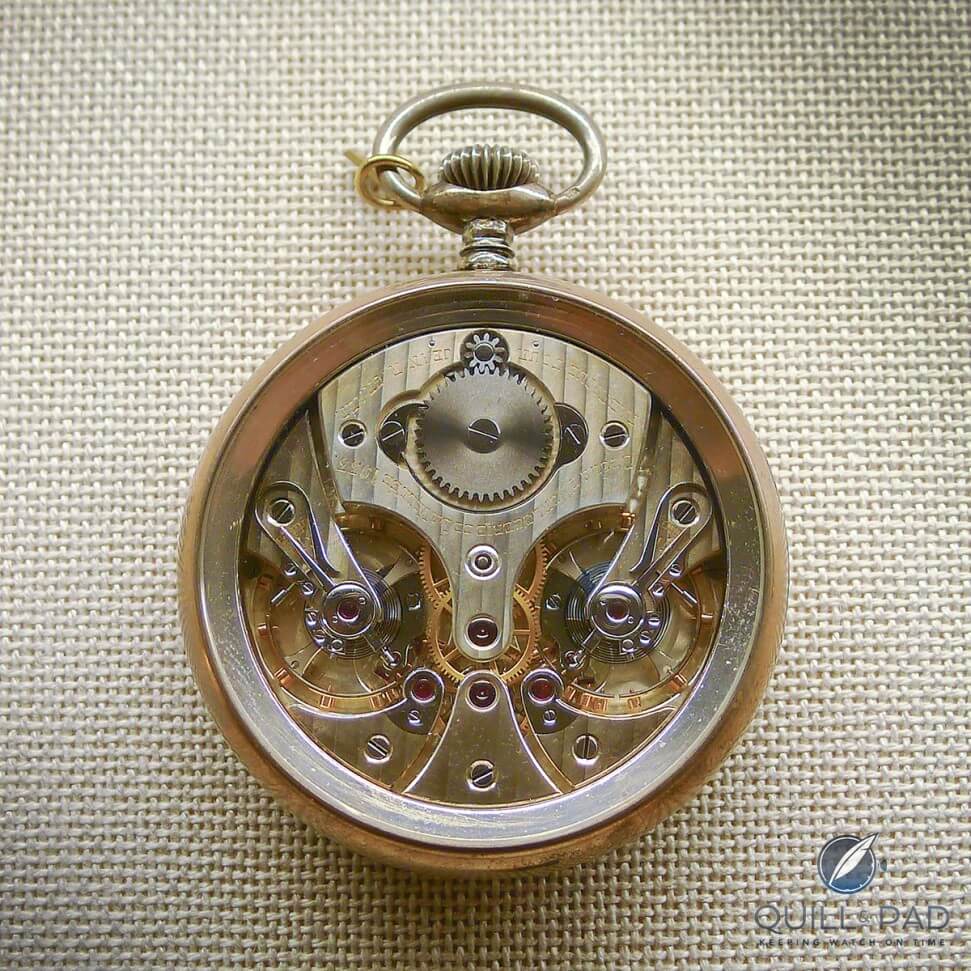
A Le Sentier horological school watch with two escapements: the inspiration for Philippe Dufour’s Duality (photo GaryG)
But it would be dead wrong to say that Philippe has not brought innovation to his work. Among other things, he was the first to make a grande et petite sonnerie in wristwatch form and the first to make a dual-escapement wristwatch with differential.
He was also among the very first to use computer-aided design (CAD) tools – something that might surprise those who consider him old-fashioned – and he utilizes leading-edge methods such as spark erosion to manufacture raw components that he then turns into jewels with his deft touch.
Finally, he helped to drive business model innovation in watchmaking by having the courage to go out on his own as an independent. He wasn’t the first independent, but along with George Daniels he showed the way for really top-rate watchmaking as a road to creative and commercial independence.
Perfection
At this point an anecdote: if you ever visit Philippe’s workshop and look in the right spot, you will see a set of identical-appearing cylindrical plugs hanging on a board. I happened to ask what they were for, and here’s the response. “The case maker is unable to make the interior circumference of the Simplicity case to the tolerance that I like. So, I use these cylinders, of slightly varying size, to identify the exact interior diameter of a given case, and I then machine the base plate of the movement to fit exactly inside.”
For me more chills spill down the spine just trying to imagine the sheer level of commitment required to do this sort of precise matching of movement to case. Not to mention dozens of other things that I’m sure we don’t know when there is a pretty good chance that they will never come to light.
The visible results are as near to perfection, in my opinion, as a hand-finished timepiece can be. There is obviously mastery of technique involved, but also a deep desire to apply that mastery.
At this level, to me, it’s no longer just craft, but authentic artistic expression.
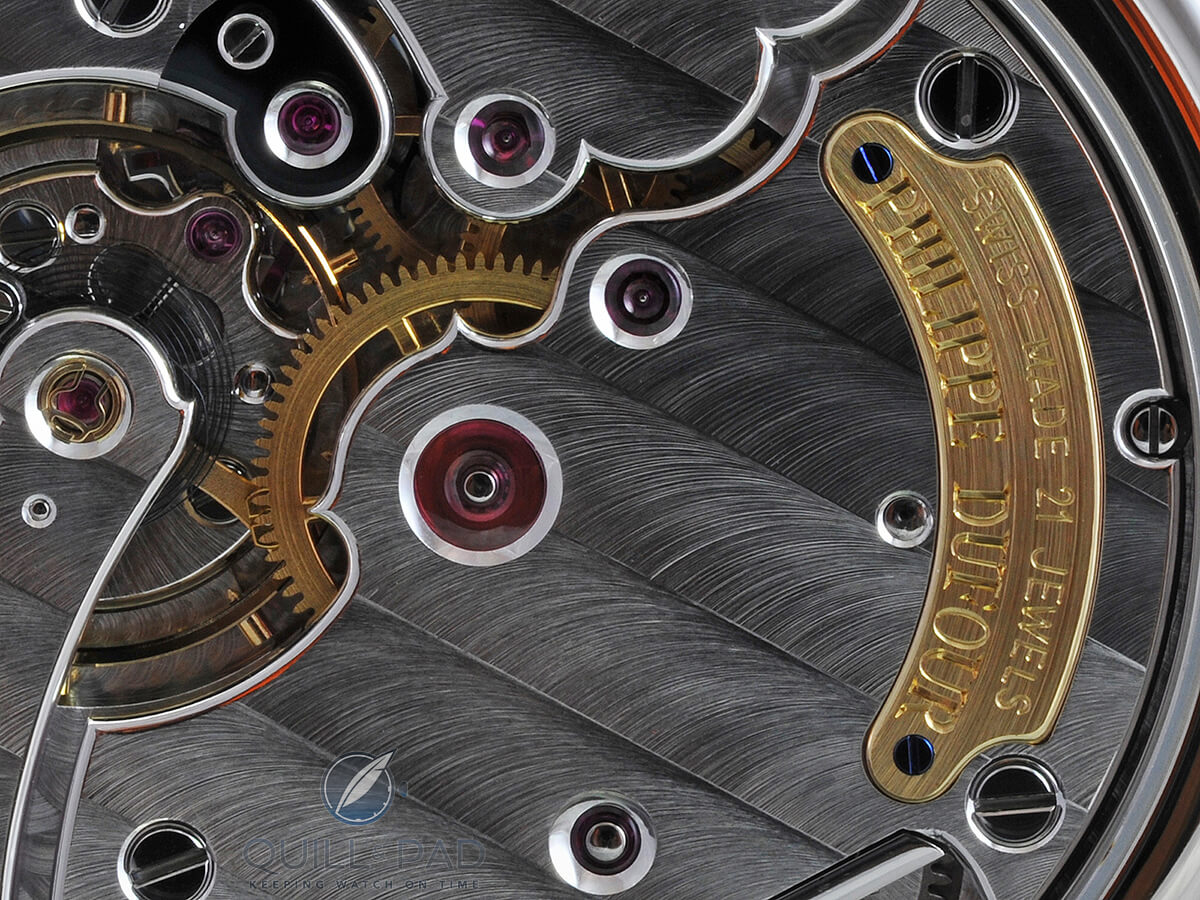
Close-up of the movement of a Philippe Dufour Simplicity showing the sublime hand finishing (photo GaryG)
Philippe held our group of collectors spellbound this past January talking about some of the “secrets” of his craft: how when he files a part, both the file and piece must move in order for them to work together to create a perfect surface.
And how, when he uses a bow to polish a jewel sink, he can tell when it’s perfect by the temperature of the polishing rod on his fingers.
Perfection, achieved at the intersection of knowledge, experience, and passion.
Perpetuation
This includes an important sub-element: inspiration. Kari Voutilainen’s recent biography states that Kari was inspired to start up his own independent atelier after a conversation with Dufour.
Behind the scenes, Philippe encourages and counsels other independents, including Romain Gauthier (whose Logical One knocked my socks off). He shares freely of his insights and helps troubleshoot difficult technical problems encountered by his colleagues.
More publicly, he is a central figure in the Le Garde Temps, la Naissance d’une Montre project along with Robert Greubel and Stephen Forsey. Philippe is working actively with watchmaker Michel Boulanger (an expert restorer and professor in his own right) to pass along the “secrets” of making a high quality watch by hand so that they can be preserved and passed on for future generations.
Innovation plays a role here as well, with many of the techniques being captured via 3D video. So, thanks in part to Philippe, the Boulangers and Gauthiers and many others to come are poised to become the Czernys and Lizsts of horology.
Finally, Dufour’s adaptations of earlier innovations are themselves inspiring new watches. A recent example of this is the dual-escapement Legacy Machine 2 by MB&F, whose founder Maximilian Büsser says was very much inspired by the Dufour Duality.
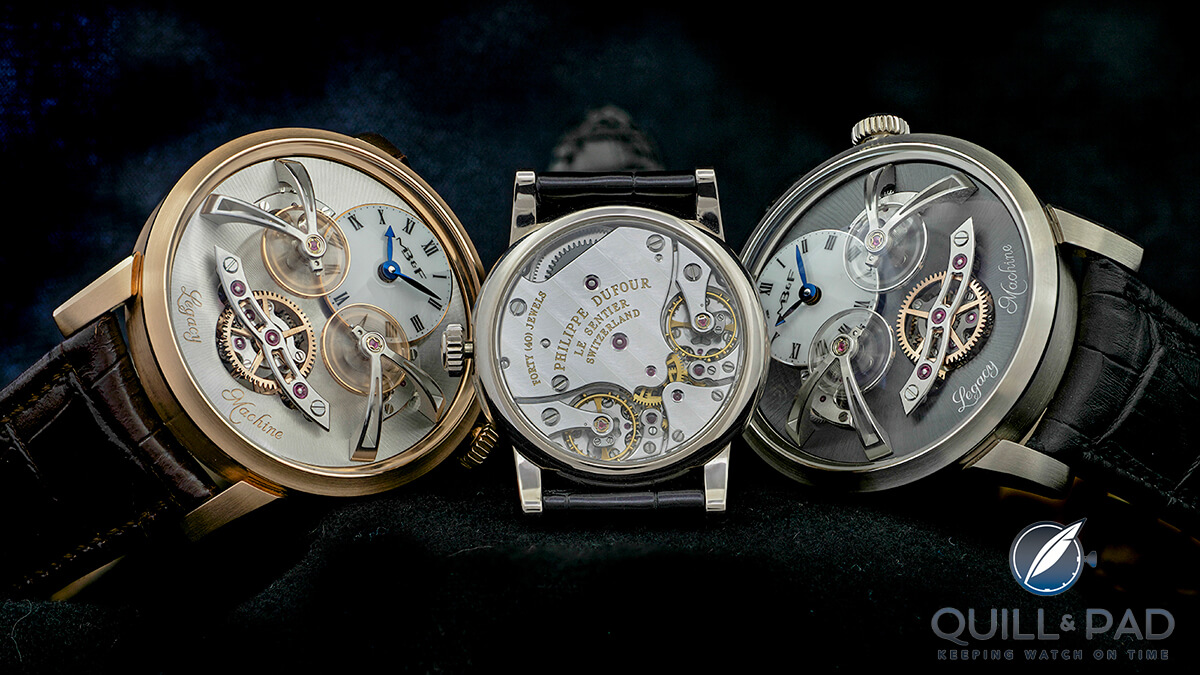
Two examples of MB&F Legacy Machine No.2 flank their inspiration, a Philippe Dufour Duality: all feature two escapements linked by a differential (photo GaryG)
Dufour and I
Suffice it to say that I feel presumptuous simply typing the subtitle above! It has, however, been my distinct privilege to meet Philippe on a number of occasions and get to know him a bit, and so perhaps I can be forgiven a few personal observations.
In addition to his role as a giant of horology, he’s also important to me as a person for the following reasons.
He’s funny
And I mean really funny. In a way that is both clever and plays off of who he is and how people react to him. At a dinner earlier this year, he kept glancing at a watch whose edge was poking out from under his right sleeve until we begged for a look.
After describing it as his “next Duality” and getting our salivary glands on overload, he pulled up his sleeve to reveal a Chinese-made watch with exposed dual balances!
One of our group has a close relationship with a major manufacturer (I’ll call it RolBregVach to protect the innocent), and more or less believes that the sun rises and sets on the brand. Specifically, he spends a fair amount of time reminding us of the brilliant hand-finishing that is, to him, a hallmark of the brand.
Knowing this from prior interactions, Philippe looked fondly at the Chinese watch, smiled, and said, “With a bit of bzzz bzzz on the edge of the movement plates with a motorized tool, this could be a RolBregVach!” Howls all around.
When he presented me with my Simplicity, he told the tale of a terminally ill woman who had approached him the prior week with a request to make Simplicities for each of her three sons as mementoes of her love.
With what I realized only later was a twinkle in his eye having hooked me with this touching but completely fabricated tale, he said, “Gary, I had to tell her no – but I hope that you feel good that you’re getting one!”
He’s genuine
He tells tales, names names, and minces no words when it comes to telling you what he thinks, be it positive or negative. When he praises a piece, it carries immense weight. When he criticizes one, there is no doubt about what he thinks.
He loves A. Lange und Söhne and owns (and wears) a Lange Datograph, but he is no fan of the more complex Tourbograph because he sees it as a “complication cocktail.”
His (negative) reaction to a friend’s chronograph pusher feel was devastating enough that the piece was on its way to a new owner within weeks.
His stories – whether of the well-known industry figure who put one of the Dufour/Audemars Piguet sonnerie pocket watches in his outer suit coat pocket and then proceeded to slam it in the door of his sports car (see “he’s funny,” above), or of quieter times together with Gabriel Locatelli – never cease to fascinate.
Philippe is the real deal, and his forthright expression, while perhaps unpopular with some industry figures, is another of his gifts to us.
He’s proud, but knows his limitations
I was going to use the term “self-deprecating” at one point earlier in this article, but immediately stopped myself: Philippe is, in his own quiet way, clearly quite aware of his leadership role in the world of fine watchmaking.
One thing that has always struck me: if you look at any of the many photographs available of Philippe presenting a Dufour watch to its new owner, he is always looking at the same place. This is directly at the watch, with a gentle smile revealing his satisfaction with what he has wrought.
I wish that I could say that I can look at every work product of my career in the same way!
At the same time, Philippe is also quite frank on his views of his own limitations. He has said on many occasions that he wishes he had been able to build an enduring team around him in his atelier. Perhaps that would be too much to ask from one whose gifts and zeal for perfection make it difficult for others to keep pace.
He’s generous
At this year’s SIHH, Philippe rushed up to us in the main hall and said he had a request for us. He wanted us to meet his daughter, who is an executive with a large U.S. corporation.
He introduced us as “those crazy collectors from California that I talk about,” which as you can imagine was flattery indeed from our perspective!
Taking time from his family discussion to draw us into the circle was just one example of expressions of generosity, large and small, that to me typifies the man.
He’s an artist
I am completely confident that he works first and foremost to please himself, within a tradition and extending it as a means of self-expression. He is often quoted as saying that watchmaking is his hobby; I don’t think that there is any doubt that at the end of the day that he answers only to himself.
He’s comfortable in his own skin
Greatest example (to me) here is from a visit of independent watchmakers to China a year or so ago, in which the watchmakers had the opportunity to dress in Chinese ceremonial robes for a dinner.
When I looked at the photos, it occurred to me that while the others look like Swiss, Dutch, or Finnish guys who somehow found themselves on another planet and would be only too keen to get back into their Western suits, Dufour looks as if he were born in imperial garb.
He reads my stuff
At dinner this past January, I mentioned a forum post I had made on the topic of my Simplicity, and Philippe said, “I liked that one!” I was taken aback that he not only read, but actually liked, some of my posts and said so.
His response, again with that twinkle, “I do read them, but I can’t respond to them online, because then some other people will say, “Waaaahhh! Dufour didn’t respond to my post’!” (See “he’s funny,” above).
Dufour from a collector’s perspective
One of my roles here at Quill & Pad is to present the perspective of an enthusiast collector: someone who appreciates many watches, but at the end of the day can plunk down his own hard-earned cash on only a small subset of them.
In my humble opinion, ownership of a Dufour watch is an extremely worthy goal for any collector with the means to do so.
I am delighted with my 37 mm Simplicity in white gold, and my greatest regret as a collector is that my absentee bid at auction for one of the sonnerie pocket watches that Philippe did for Audemars Piguet was too low to carry the day.
What I’m talking about here is not the potential for financial appreciation, as no one knows what the future prices of particular watches will be. It is to hold in one’s hands a piece of history – a watch that some day, like those of Abraham-Louis Breguet and George Daniels, will be worthy of inclusion in the finest collections and museums of the world.
I’m not alone, either. Among our small local enthusiast collector group, there are six Dufour watches: five Simplicities, and one of the nine Dualities made. Great pieces indeed, but it’s the fact that our enthusiasm for them gives us the opportunity to know Philippe, and see him at work, that is truly priceless.
* This article was first published on June 16, 2014 at Why Philippe Dufour Matters. And It’s Not A Secret.
Leave a Reply
Want to join the discussion?Feel free to contribute!





















































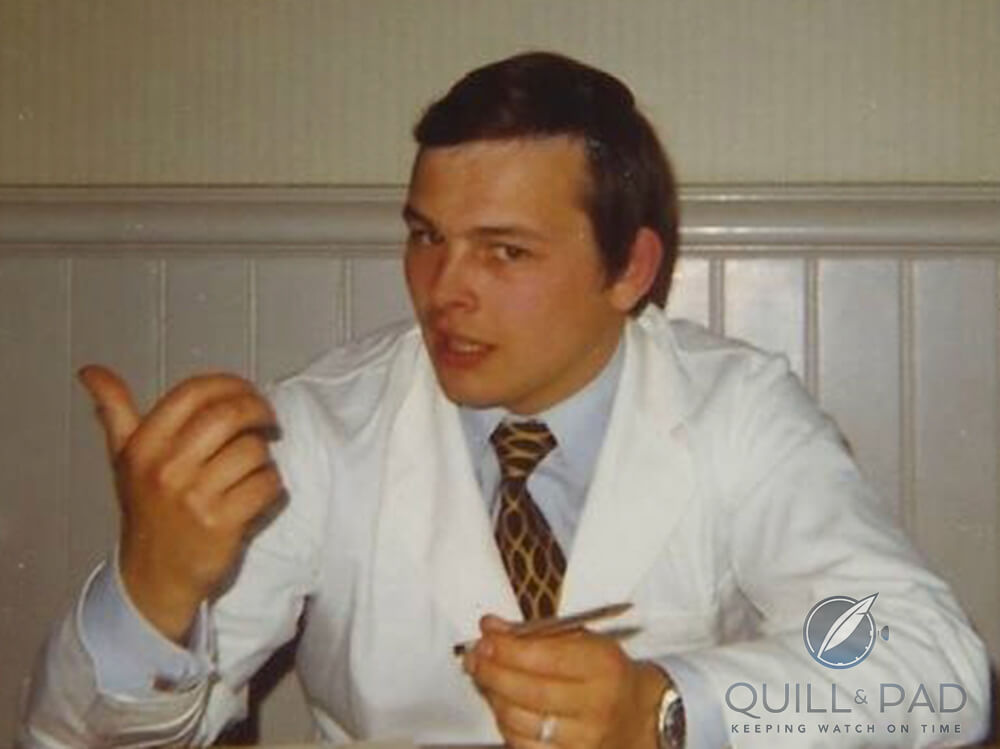
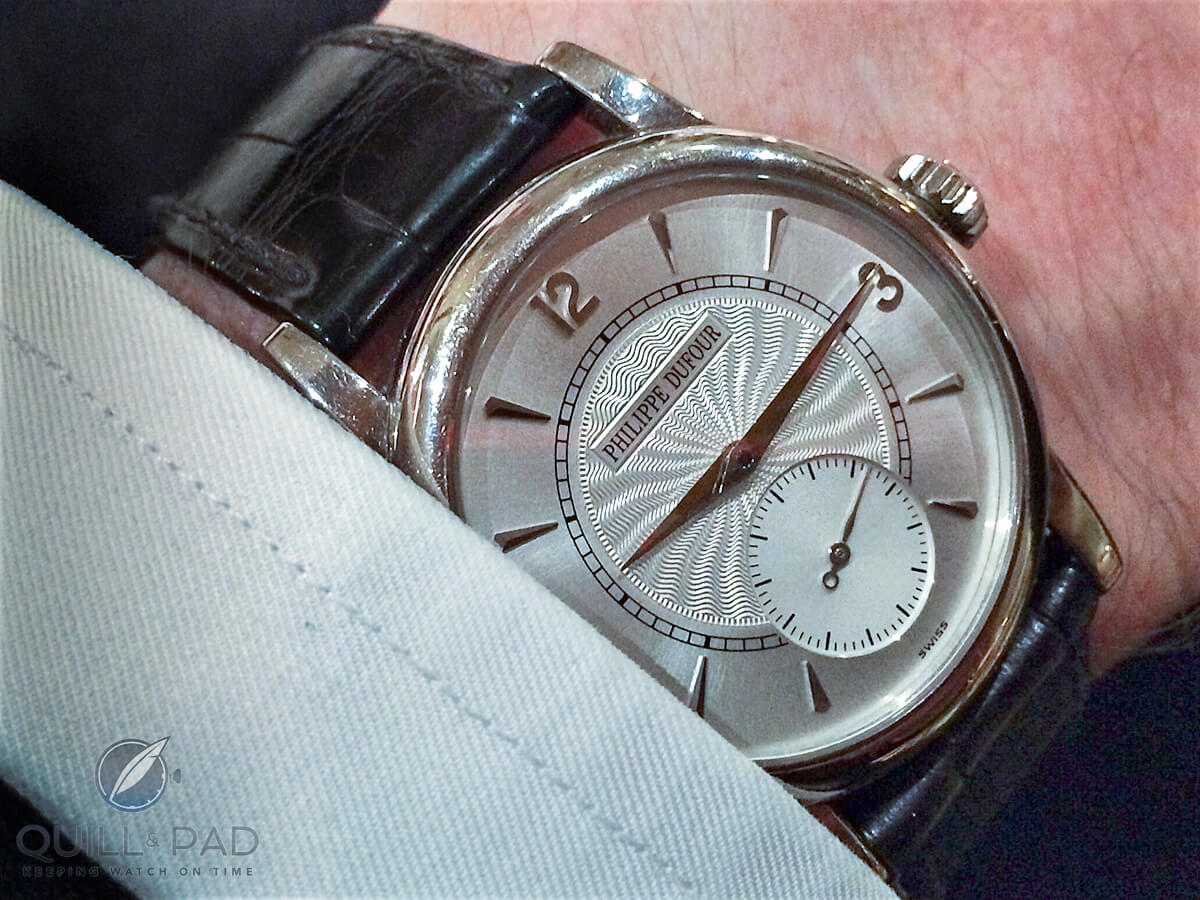
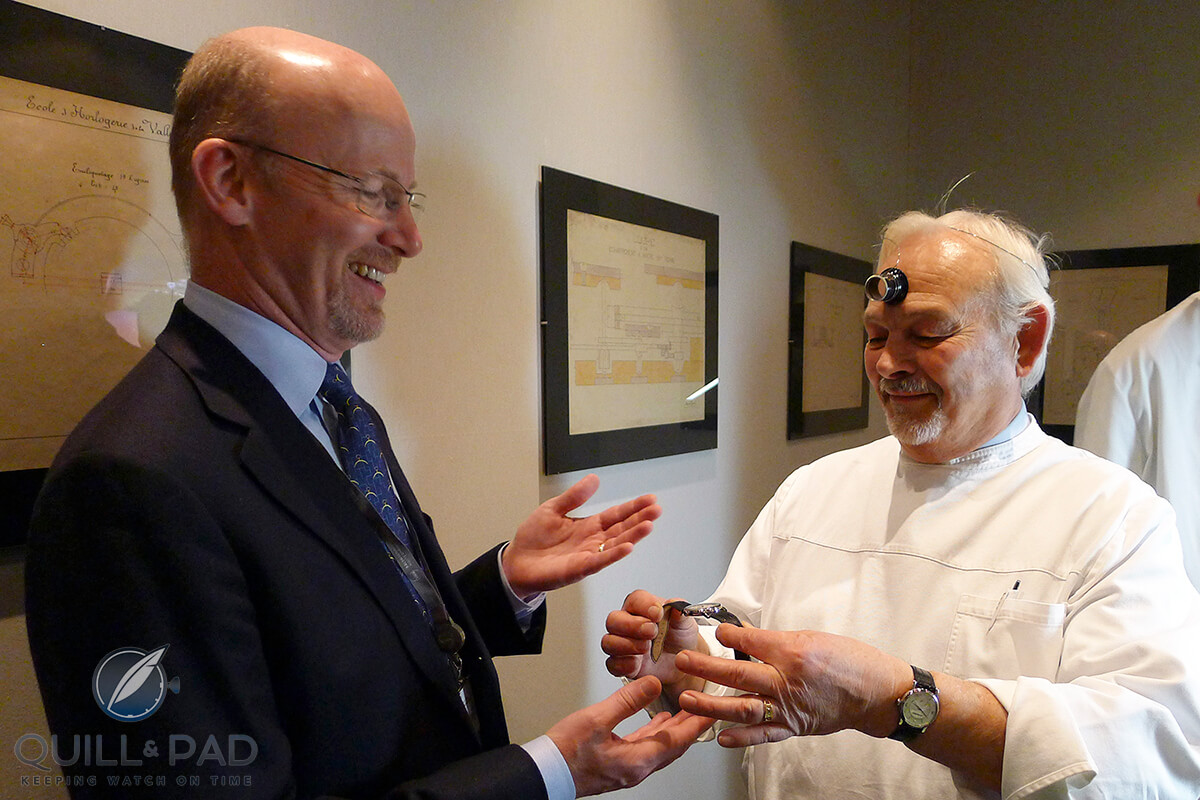
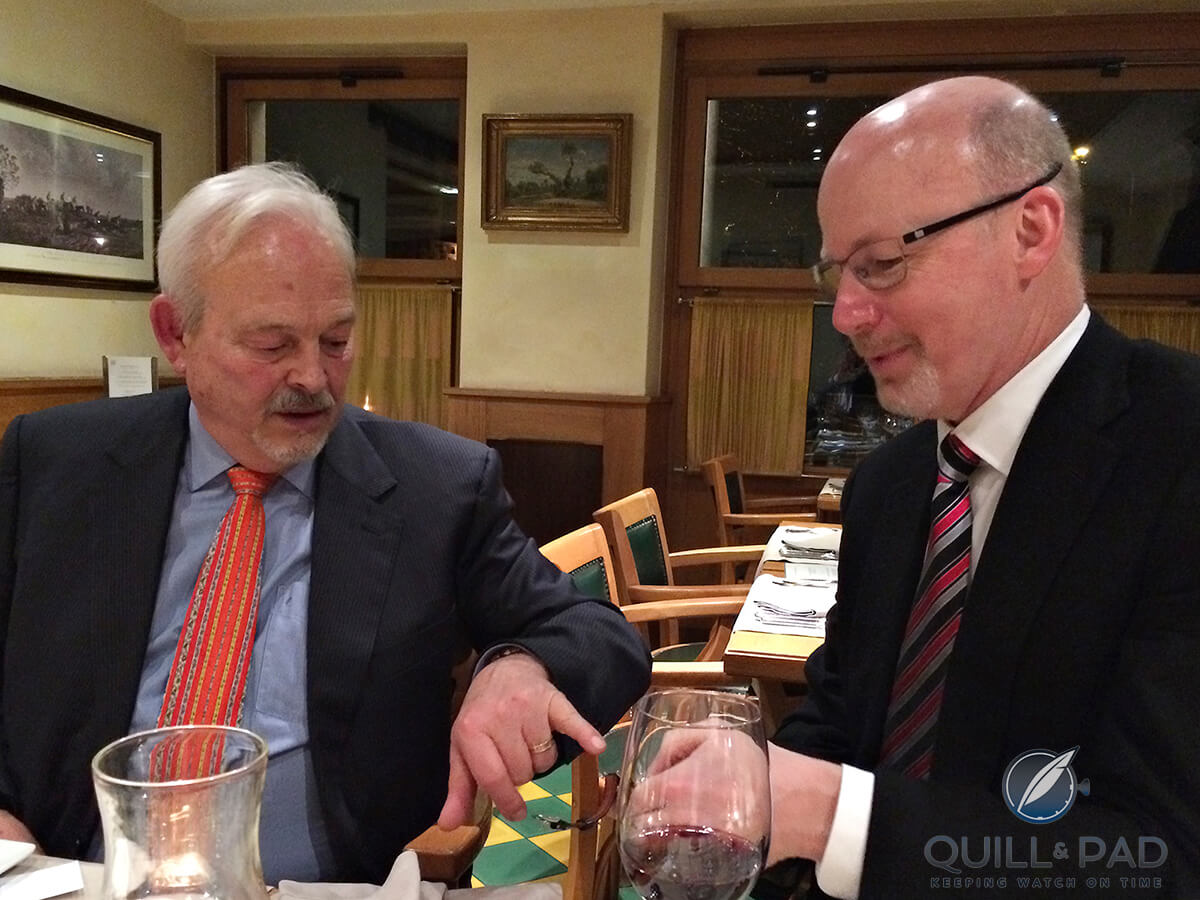

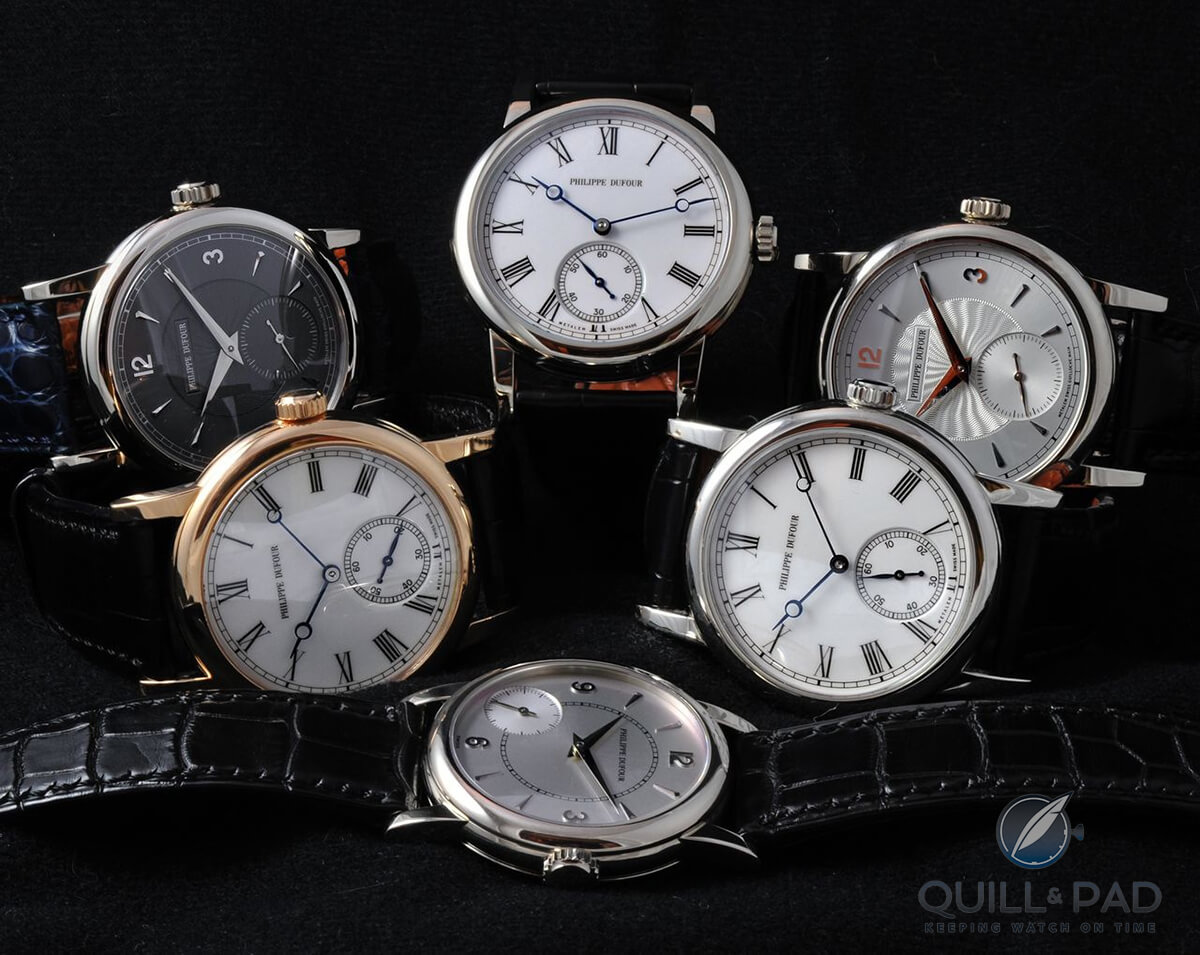
Can somebody please tell me how to properly acquire one? Pretty please?
I would love to provide the secret answer, but can’t be of much help as I’d be getting another of my own if I could! He is making a very small number of watches these days and has an enormously long waiting list — the only hope is to wait for a piece to come up at auction or to keep asking among your collector friends in the event that anyone undertakes a private placement. Good luck!